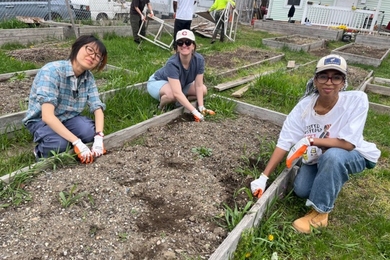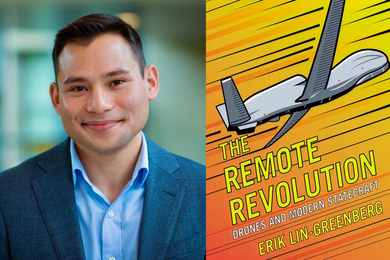Toscanini's ice cream shop owner Gus Rancatore has sold home-made frozen treats and fresh coffee to hundreds of dignitaries and celebrities during his 25 years in business, but some of his favorite customers have been the students, faculty and staff members of MIT.
Rancatore has long been part of the MIT community, a presence in both his Central Square store and in the smaller shop that filled the Student Center space now occupied by Anna's Taqueria. Â "MIT is full of perpetually interesting customers," said Rancatore who also has a couple of semi-franchises in other Cambridge and Somerville locations.
Rancatore's close relationship with MIT has endured, despite the closing of his Toscanini's after six years in the student center. This year he released an Amazon.com short memoir co-written with Helen Epstein about his experiences over the years running his ice cream business. The book, "Ice Cream Man: 25 Years at Toscanini's," has been a top seller on Amazon since its release in Dec. 2006. In it, he speaks of his affection for the "MIT nerds."
"Winding up down the street from MIT is ironic for a person who once tried to dry his football jersey over a campfire," Rancatore says in his book. "Shortly after we opened, I asked a customer what he was majoring in and he said, "Aero astro." I asked what he wanted to do and he answered levelly that he planned to be an astronaut. I think that was the beginning of my great affection for the subculture that is MIT."
As Rancatore says in his book, he never set out to serve what many consider to be the best ice cream in Boston. He came from a family of small business owners and fell into making ice cream after a short stint at Steve's Ice Cream, which was a Boston and Cambridge institution in the 1970s.
Over the years, Toscanini's has had hundreds upon hundreds of flavors. At least 300 flavors cycle through annually, Rancatore said.
Some local favorites include coffee ice cream and burnt caramel, but some of the more exotic flavors like Khulfee--an Indian flavor made of cardamom, almonds and pistachio--were born of customer suggestions and are also growing in popularity.
Many of the international flavors that have ended up in Rancatore's freezer started in the minds of MIT student, faculty and staff who suggested them. There was the rocky road-like flavor that was named "chocolate sluggo" for an MIT athletic coach. Originally the coach suggested two fruits, two candies and two nuts. "I took his idea and edited it down," Rancatore said with a laugh. "It would have been too much for one ice cream." Nevertheless, taking suggestions from MIT is a tradition, he said.
"We still have an ice cream machine that was built during a school holiday by two superconductor students offended by the noise and clunkiness of our equipment," Rancatore said in his memoir.
Although Rancatore has served ice cream to movie stars like Ben Affleck and Matt Damon, they do not impress him as much as some of those he has met because of the store's proximity to the Institute, he said. In 2003, when he visited MIT, the Dalai Lama came to Toscanini's and ordered a chocolate cone.
Despite leaving the beloved student center location, Rancatore can still walk the infinite corridor and see people he recognizes. Although he purports to be "bad with names," he remembers details about his customers--who they dated when they were at school, the finals they failed--with the precision of an old friend.
In his book, Rancatore likens himself to a "host of a B & B, or the director of a day-care center or, sometimes, a cop in a Star Wars bar." But at the end of the day, it is his customers and the relationships they form that most pleases him.
"I feel a bond with Paul Rusesabagina, the hotel manager who succeeded in protecting hundreds of Tutsis in Rwanda," Rancatore says in his book. "The world may be falling apart around him but he retains his civility and kindness. Have a cup of tea, he says, as soldiers are kicking down the doors. I hope you like it."
A version of this article appeared in MIT Tech Talk on January 10, 2007 (download PDF).





